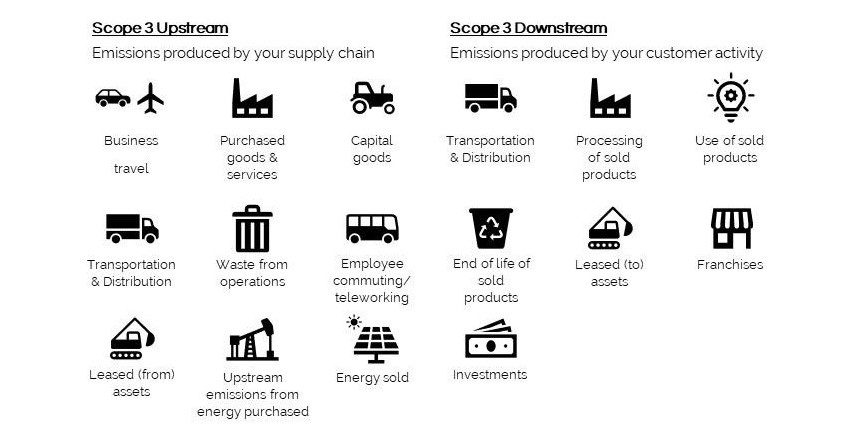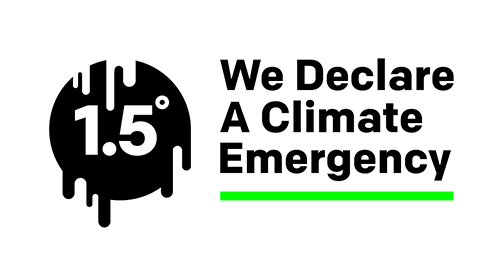Send a message 0333 344 5890 |
- Home
- Knowledge
- Learning Hub
- Why Should I Include Scope 3 Emissions in my Carbon Footprint Calculations?
Why Should I Include Scope 3 Emissions in my Carbon Footprint Calculations?
A common scenario, for an organisation that is reporting on its carbon emissions will be to focus first on its scope 1 and scope 2 emissions, as determined by the Green House Gas (GHG) protocol.
Scope 1 emissions are essentially all the emissions that are directly owned or controlled by a company, for example, at its manufacturing facilities or its use of company vehicles, while scope 2 emissions are the indirect emissions- from the generation of purchased energy, for example- that runs these facilities or vehicles.
However, to truly measure the impact an organisation has on the environment and create a more accurate picture of its carbon footprint, we also include its scope 3 emissions. An organisation’s scope 3 emissions are typically 2-5 times higher than its scope 1 and 2 emissions, so it is critical to include them if we really want to reduce the impact that an organisation has on climate change.
We use the Corporate Value Chain (Scope 3) Accounting and Reporting Standard which is the most widely used, internationally recognised standard in the world to measure scope 3 emissions and by considering these upstream and downstream activities we can adopt a uniform approach for measuring an organisation’s total carbon impact.
What are Scope 3 emissions?
Scope 3 emissions, often referred to as Value Chain emissions, represent all the emissions that originate from sources that aren’t owned or controlled by the reporting organisation but occur because of its relationship with other organisations in the production, distribution and eventual disposal of its products or services.
Scope 3 emissions therefore incorporate the emissions from the upstream and downstream activities of an organisation that are not already captured in scope 1 and 2. Click here for more details on Scope 1,2 and 3 definitions.
Scope 3 reporting accounts for 15 categories of emissions from both upstream and downstream activities. While each category is comprised of multiple activities that each result in emissions, the 15 categories are designed to be mutually exclusive, such that, for any one reporting company, there is no double counting of emissions between categories.

We include all relevant categories to calculate the contribution made by your value chain to your overall carbon footprint.
Despite often representing the largest source of an organisation’s greenhouse gas emissions and therefore offering real opportunities for carbon reduction, as they are largely considered to be out of a business’s direct control, and therefore harder to measure, several businesses ask us, ‘why should they include scope 3 emissions in their carbon footprint calculations?’
Why It’s Important to Include Scope 3 Emissions in your Carbon Calculations
While it is true that scope 3 emissions are largely another organisation’s scope 1 and scope 2 emissions, even one business that seeks change and reductions in carbon emissions from its production, distribution and waste disposal activities can have a critical impact within the whole value chain.
While incorporating another organisation’s scope 1 and scope 2 emissions as your scope 3 emissions can lead to double counting of emissions with your suppliers, widening the scope for measurement and reporting on these sources provides significant opportunities for process improvement and carbon reduction but also ensures a reporting organisation has considered the wider impact of its activities and provides comprehensive evidence that a business takes its carbon reduction activities seriously.
Only when we recognise the full scale of a company’s exposure to carbon can we assess its total carbon footprint.
Discounting the emissions for each company within a value chain because the responsibility is that of another organisation would also lead to an underestimation of the true cost of these emissions on the climate.
There are obvious environmental advantages for businesses that reduce their overall carbon footprint by accounting for scope 3 emissions. The more greenhouse gas (GHG) emissions that are accounted for and targets set to reduce these, the faster net zero goals can be achieved.
The benefits of tackling Value Chain (Scope 3) emissions
The crux of the problem of course, is by using this method of including emissions from both upstream and downstream activities it can inflate the size of an organisation’s carbon footprint and mean that most of the emissions captured come from assets or activities out of their direct control. Nevertheless, there are several benefits associated with measuring Scope 3 emissions.
Firstly, given the sheer scale of the carbon footprint of some organisation’s upstream and downstream activities, it could be that most of their carbon reduction opportunities also lay outside their operations.
Secondly, by definition trying to reduce scope 3 emissions forces businesses to engage with suppliers, distributors and other stakeholders and start a conversation about emissions reduction. This often leads to better working relationships and further opportunities to improve other processes upstream and downstream. Businesses proactively addressing their value chain impacts are able to generate shared value through supply chain engagement activity and can identify collaborative ways to improve efficiency and reduce their environmental impacts.
By measuring Scope 3 emissions, organisations can assess whether there are sources of high emissions – called emission hotspots- in the value chain, and therefore identify where there are risks and inefficiencies in their operations. If suppliers or distributors are found to contribute a significant proportion of a reporting business’s carbon footprint, then collaborating with these organisations to help them implement sustainability initiatives will provide mutual benefits.
Looking deeper into the supply chain can also show which suppliers are high-performers and which could do better in their sustainability performance. This may pave the way for organisations to renegotiate contractual terms based on reductions and therefore encourage suppliers to make more effort to reduce their emissions.
Scope 3 emissions also extend downstream and evaluating the emissions caused after a product has been sold can in fact improve it. If emissions are high in relation to the use and disposal of a product or service, businesses can enhance it by increasing its lifespan making it more energy-efficient or recyclable.
Finally, as scope 3 carbon emissions also include the commuting and business travel of employees, these emissions can rarely be reduced without the full engagement of a workforce. Having cross-organisational buy-in to sustainability plans generally leads to a more successful outcome.
Support with measuring Scope 3 emissions
Quantifying carbon emissions is only the first step to achieving carbon reduction goals. The much bigger question is how to then use this data and interpret what it tells you about your supply chain risks or the current performance of your products. If businesses only intend to use the information to support their corporate reporting and the disclosure of their emissions - they miss the value and opportunity this data offers to inform critical decisions about the future direction of their business. While many businesses are making progress optimising their own operations and reducing their direct emissions, if they remain reliant on an inefficient value chain, in the long run their carbon reduction plans will fail.
Getting expert help with the Scope 3 mapping exercise can give you peace of mind that all emissions are being reported in the most accurate way, while also ensuring that you don’t accidentally include emissions that aren’t relevant to your business. At Go Climate Positive, we have developed a wide range of techniques and strategies that make measuring your scope 3 emissions much easier than you might think.
If you would like some guidance on how to calculate your Scope 3 emissions get in touch with our Carbon Coaches today.




